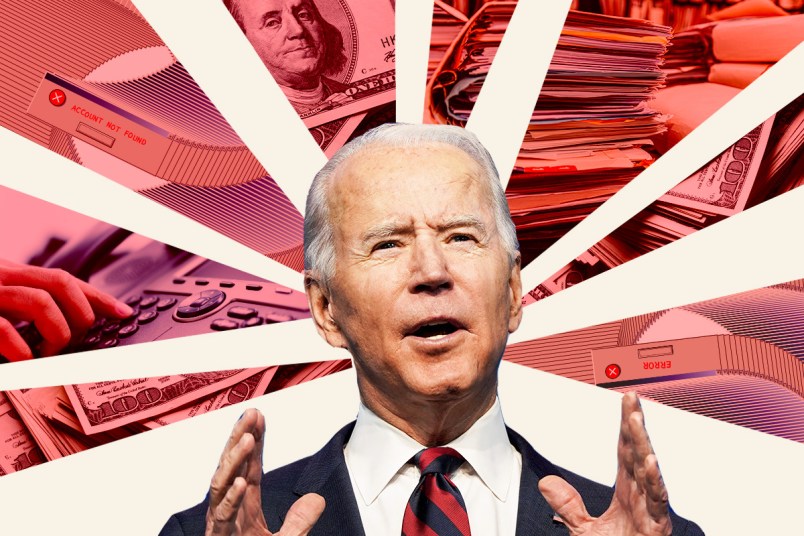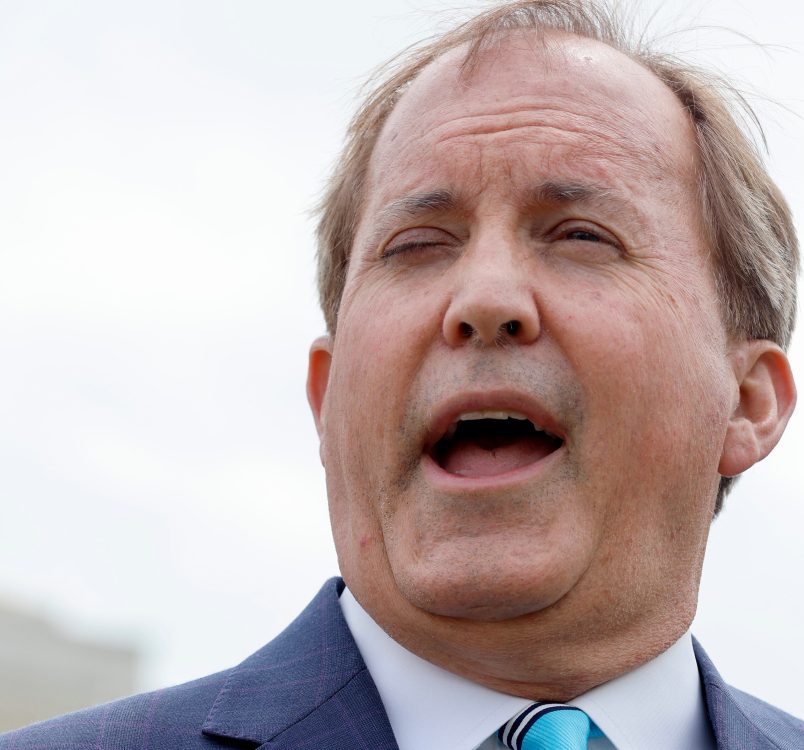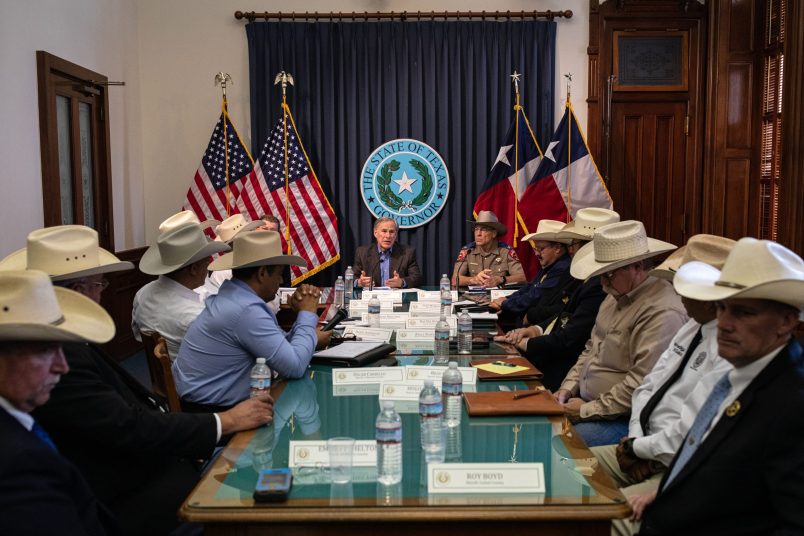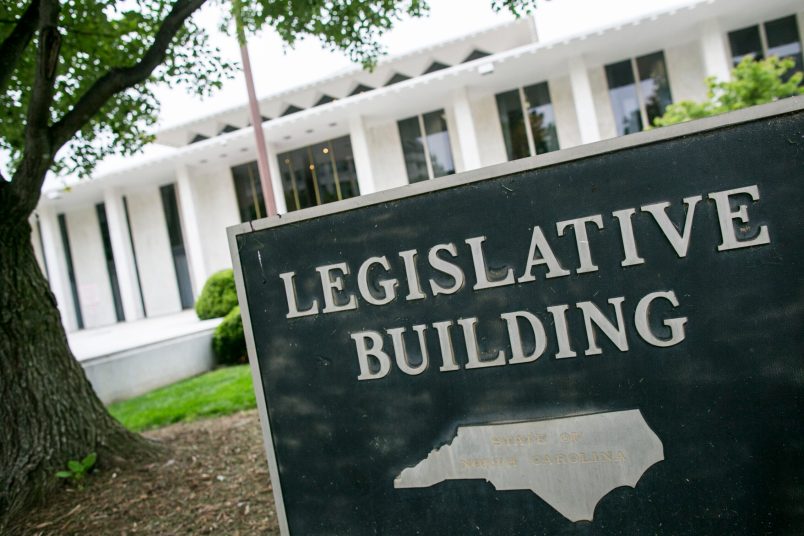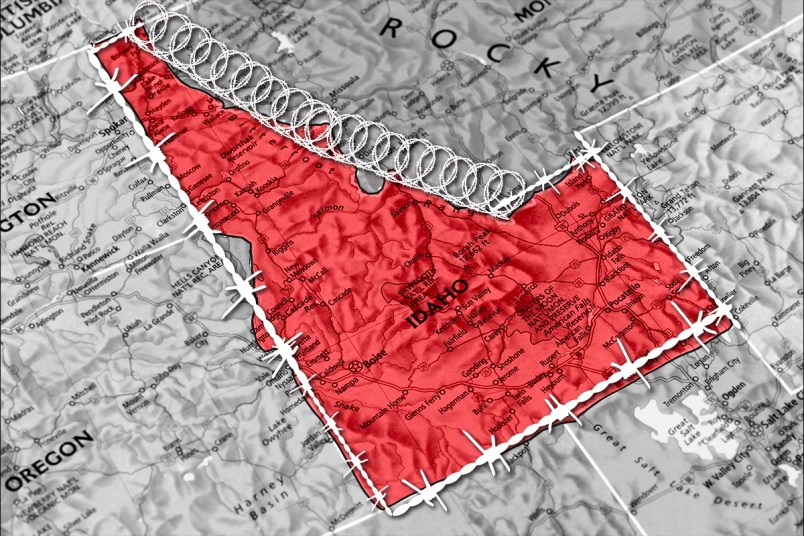President Joe Biden appears to be inching closer to announcing a plan to forgive some amount of federal student loan debt, an idea he supported on the campaign trail and has been pushed to realize by progressives since he took office.
There have been a number of leaks in recent weeks, suggesting that the White House is sending up test balloons before finalizing the plan.
It seems, based on what has been reported so far, that the relief will be income-targeted to single people under somewhere from $125,000 to $150,000 a year and couples filing jointly under $300,000. Biden is reportedly considering wiping out $10,000 of debt per eligible borrower.
The plan has obvious upsides: Biden is underwater with young voters right now, and a majority of them support widespread student loan forgiveness. He could notch a win just before the midterms, and do it unilaterally, without being at the mercy of Sen. Joe Manchin (D-WV) and the Senate filibuster.
Supporters of student loan forgiveness also sing its virtues outside of a narrow political calculation: millions and millions of Americans are buried under crushing debt for pursuing an education, and the heaviest and most lasting burden tends to sit on the shoulders of Black borrowers. Freeing people of that burden could help them buy homes or start businesses or fund their children’s education.
But the President has made his discomfort with universal student loan forgiveness known. He doesn’t like the idea of forgiving loans for students of elite universities, and has been candid about his desire to target the relief. As it is, Republicans are already eager to reframe student debt forgiveness as a government handout to rich, snooty kids who will one day fill in the ranks of the detestable elites.
A targeted program, one meant to box out the wealthiest borrowers, makes political sense. But it’s infinitely harder to implement than a universal program, and would likely require an immense logistical lift. Here are some major tension points you’ll likely see being debated if Biden unveils a plan similar to the one that’s been floated in recent reports:
The Education Department doesn’t know how much most borrowers make
Some parts of the government know how much you make. Some don’t. In this case, the information that the Internal Revenue Service (IRS) has is not readily available to the Department of Education, which would be handling the debt forgiveness. These restrictions are meant to protect taxpayers’ privacy concerns, but can also greatly diminish which administrative burdens the government can shoulder on behalf of the individual.
A hotly debated law to relax those boundaries was passed in 2019, but isn’t even slated to go into effect until 2023. And when it does, individuals will have to affirmatively opt in to let the IRS share their data.
Even if the IRS could easily transmit its information to the Education Department, debt-saddled borrowers who make too little to pay income taxes would be left out.
It would likely require a whole new system for borrowers to apply
All of that means there’d have to be some kind of unique application system for eligible borrowers (if you’re having healthcare.gov flashbacks, you’re not the only one). However you slice that, it’s a massive undertaking. The infrastructure would have to work for tens of millions of people — and experts worry that the paperwork hurdle alone would limit the program’s reach.
So the Education Department, which has never forgiven debt on this scale, would have to stand up a system to determine who qualifies for relief — and would also have to figure out how to apply the forgiveness to debts that are usually amalgamations of different loans at different interest rates. All of that could take some time.
The administration could opt for a self-attestation model, where borrowers assert that they qualify, perhaps with supporting documentation. That would raise new questions about the government’s ability to verify the claims and may still require additional proactive steps by the borrower.
The supporting infrastructure is lacking
Whatever the entry point to getting the relief looks like, it’s a certainty that there will be lots of phone calls from borrowers trying to figure out if they qualify and/or how to use the system.
That probably entails hiring and training new people to deal with questions.
And it’s necessary at this juncture in particular, because the Education Department’s contracted loan servicers have been reducing staff over the past couple of years amid the repayment freeze. When the Biden administration expanded a loan forgiveness program last year, the department had to publicly ask borrowers to stop inundating servicers with calls, Politico noted.
It’s not necessarily a political slam dunk
Biden’s attempts to find a middle ground, driven in part by his reluctance to institute the logistically easier universal forgiveness, may anger not just those to his right, but also those to his left.
Progressives want more. Many call for universal forgiveness, and shrug off $10,000 in relief as far too little. Sen. Elizabeth Warren (D-MA), a leading lawmaker on the issue, advocates for a sliding scale in relief related to income, but would erase $50,000 in debt for the poorest borrowers. Senate Majority Leader Chuck Schumer (D-NY) has echoed her call.
Even more than the specifics, though, public approval of the plan would likely rest on its workability — which brings us back to those healthcare.gov comparisons. The harder it is for borrowers to get the relief — whether due to a complicated website or arduous paperwork requirements or because they don’t know it exists — the less goodwill the benefit will generate for the administration.
In general, it may be impossible for Biden to reap the benefit before the midterms anyway. There’s very little time left for the Department to stand up a system and get relief to eligible borrowers, unless the administration has begun working on something behind the scenes.
The proposed program, as reported, also wouldn’t address the larger issue of ballooning tuition prices and the often predatory student loan landscape; a one-time forgiveness would do nothing for future students.
Lawsuits will ensue
Legal experts disagree about the extent of the President’s power — via the Education Secretary — to institute widespread student loan forgiveness. And since the legal disagreements are centered on often ideological policy debates, some of that has permeated the conversation too.
Those supporting Biden’s ability to cancel debt often point to a memo from the legal services center of Harvard Law School, which argues that Congress gave the Education Secretary broad powers “to create and to cancel or modify debt” in the 1965 Higher Education Act.
It’s the same place from which the Biden and Trump administrations derived the power to institute the repayment freezes.
On the other hand, some argue that Congress’ subsequent changes to the Higher Ed act have cited narrow circumstances under which debt can be forgiven, perhaps complicating the argument for more blanket forgiveness.
It’s a yet untested boundary of this power, which almost guarantees litigation. Amid the legal ambiguity stands a Supreme Court generally hostile to agency authority.
If implemented well, Biden’s debt forgiveness program could give his administration a much-needed political boost, and earnestly improve the quality of life for millions of Americans. But doing it in a targeted way is complicated, and will require an impressive administrative and logistical lift to reach those who need it most.


